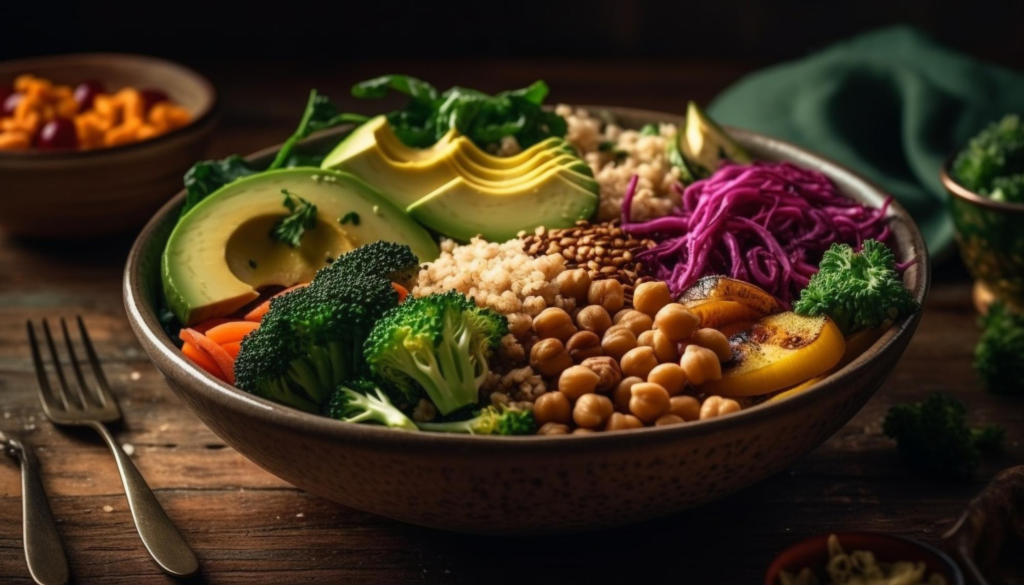Understanding plant-Based Protein is essential for those looking to adopt a plant-based diet. It is protein derived from sources such as seeds, legumes, and grains. Unlike animal-based protein, it is free from cholesterol and generally lower in saturated fat. It is also rich in essential nutrients, including fiber, vitamins, minerals, and antioxidants. Understanding the different plant-based protein sources and their nutritional profiles can help you make informed choices for a balanced diet.
Incorporating plant-based protein into your meals can provide you with a wide range of health benefits. It is known to support heart health by reducing the risk of cardiovascular diseases. It is also beneficial for weight management as it tends to be lower in calories compared to animal-based protein. Additionally, it can help improve digestion and promote a healthy gut due to its high fiber content. Understanding the benefits of plant-based protein can motivate you to explore delicious plant-based protein alternatives and make healthier choices for your overall well-being.
Health Benefits of Plant-Based Protein
The health benefits of plant-based protein are numerous and diverse.
Consuming it can help lower the risk of chronic diseases such as heart disease, diabetes, and certain types of cancer.
It is rich in fiber, which aids in maintaining a healthy digestive system and preventing constipation.
It also promotes satiety, making you feel fuller for longer periods and reducing the likelihood of overeating.
Plant-based protein sources are also generally lower in saturated fat and cholesterol compared to animal-based protein sources. This can contribute to lower blood cholesterol levels and a reduced risk of heart disease.
It is also a great source of antioxidants, which help protect the body against free radicals and oxidative stress.
In addition to these benefits, plant-based protein can support muscle growth and repair. Contrary to the misconception that only animal-based protein can provide sufficient protein for muscle development, plant-based protein sources such as legumes, tofu, and quinoa are packed with amino acids necessary for muscle synthesis. They can be incorporated into a well-balanced diet to meet the protein requirements of individuals engaged in regular physical activity or strength training.
By opting for plant-based protein, you not only enhance your health but also contribute to the well-being of the planet. Plant-based protein requires fewer resources, such as land, water, and feed, compared to animal-based protein production. It has a lower carbon footprint and helps reduce greenhouse gas emissions, making it a more sustainable choice for the environment.
Comparison of Common Plant-Based Protein Sources
When incorporating plant-based protein into your diet, it is helpful to understand the different sources available and their nutritional profiles. Some excellent sources are legumes, including beans, lentils, and chickpeas. They are also rich in fiber, iron, and other essential minerals. Nuts and seeds, such as almonds, chia seeds, and hemp seeds, provide protein as well as healthy fats.
Whole grains like quinoa, brown rice, and oats also contain protein, along with fiber and various nutrients. Tofu, tempeh, and seitan are popular plant-based protein options for those following a vegetarian or vegan diet. These soy-based products offer a complete amino acid profile and can be used as substitutes for meat in many recipes.
Incorporating a variety of plant-based protein sources into your meals ensures that you receive all the essential amino acids and nutrients your body needs. It also adds diversity to your diet, making it more enjoyable and satisfying. Experimenting with different recipes and trying new plant-based protein sources can help you discover delicious and nutritious alternatives to traditional animal-based protein.
Incorporating Plant-Based Protein into Your Meals
Incorporating plant-based protein into your meals is easier than you might think. Start by adding legumes, such as beans or lentils, to soups, stews, and salads. They can also be used to make delicious veggie burgers or as a filling for tacos or burritos. Experiment with tofu, tempeh, or seitan to create plant-based versions of your favorite meat dishes, such as stir-fries or curries.
Include a variety of nuts and seeds in your diet by sprinkling them on top of salads, adding them to smoothies, or enjoying them as a snack. Whole grains like quinoa, brown rice, and whole wheat pasta can be used as the base for nutritious and satisfying meals. By combining different variety of vegetables, fruits, and whole grains, you can create balanced and flavorful meals that are both nutritious and delicious.
Remember to pay attention to portion sizes and ensure you are consuming enough calories and nutrients to meet your individual needs. It may be helpful to consult a registered dietitian or nutritionist to ensure you are getting all the necessary nutrients from your plant-based diet.
Frequently Asked Questions:
-
What are plant-based protein foods?
– Legumes, including beans, lentils, and chickpeas
– Soy-based proteins like Tofu, tempeh, and seitan
– Whole grains like quinoa, brown rice, and oats
– Nuts and seeds, such as almonds, chia seeds, hemp seeds -
What are benefits of plant-based proteins?
– Lowers the risk of chronic diseases such as heart disease, diabetes, and certain types of cancer
– Aids in maintaining a healthy digestive system
– Promotes satiety, making you feel fuller for longer periods
– Contributes to lower blood cholesterol levels
– Protects the body against free radicals and oxidative stress
– Supports muscle growth and repair -
How much protein in Paneer?
Every 100 gm of paneer contains around 18-20 gm of protein.

